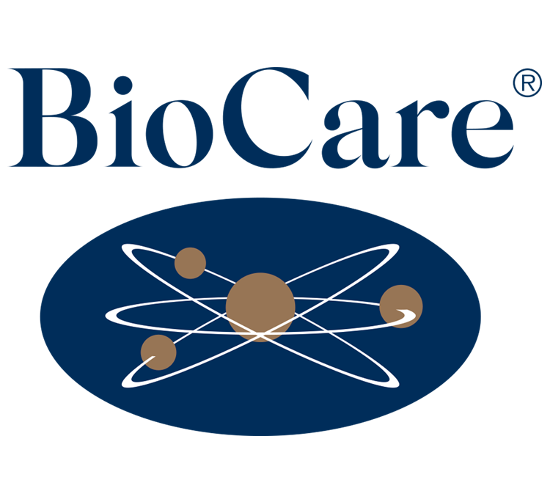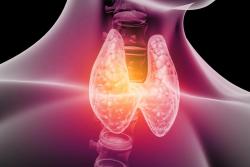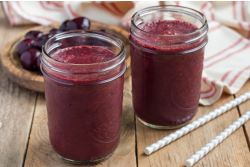With the new academic year approaching, you have probably been starting to think about how best to help support your child, physically and emotionally in order to embrace their new challenges; whether you are a parent, teacher, childminder or support worker.
With this in mind, we would really like to discuss children’s brain development and how best to support those children who are not ‘meeting expectation’ or ‘exceeding expectation’ with the cost of anxiety and behavioural changes. To understand our children, and therefore support them to the best of our ability, we need to understand a few key physiological factors.
Brain architecture
The brain is primarily made up of 3 parts – cerebrum, cerebellum and the brainstem.

Traditional thinking has exclusively associated learning with cerebral activity. The Cerebrum is the main part of the human brain, approximately the size of a cantaloupe melon, it holds instructions for everything you do in life, as it gets its information from the environment and sends the info to a specific part of the cerebrum. It is divided into right and left hemispheres.
The cerebellum is towards the back of the brain and is mostly involved in executive motor processing. This means that it is extremely important to be able to perform everyday voluntary tasks such as writing, walking etc. Tasks which are carried out with purpose and intent. However, it is also implicated with some less voluntary functions such as balance and muscle coordination. It accounts for around 10% of the brain mass, however contains more than 50% of its neurons.
The brain stem, as the name suggests, is at the base of the brain, connecting the cerebrum with the spinal cord. It controls fundamental autonomic body functions such as breathing, swallowing, blood pressure, blinking etc.
Newer ways to think about the brain
Despite the cerebellum accounting for around 10% of the brain mass, it is thought to contain more than 60% of its neurons.[i] Despite this huge capacity for processing, it has been assumed that it functions outside of any level of conscious awareness. Last year however, neuroscientists discovered that it plays an integral role in the reward response, which obviously then shapes human motivation and behaviour, and puts a new spin on how we view the relationship between cerebellum and cerebrum.[ii]
Research is now suggesting that the cerebrum and cerebellum communicate with each other aiding in cognitive processing and therefore playing a part in learning and memory, and may even be the key to explain genius thinking.[iii]
Further evidence to support cerebellar involvement in cognitive function comes from several sources. One of which identified that individuals with cerebellar lesions are more likely to experience deficits in attention and short-term memory[iv] and other studies show that the cerebellum is activated when individuals perform cognitive tasks.[v]
Are we all kinaesthetic learners essentially?
So to summarise, the same part of the brain that processes and controls movement also processes learning. Despite this ‘learning through play’ theory being around for decades, the information is still trickling through society so that all children can be helped by this, not just the ones at the beginning of their academic and social experiences.
There has been plenty of evidence to suggest that for multifactorial reasons, children who exercise see the benefit in their academic learning,[vi] and also moving whilst learning, aids memory and processing.[vii] We can use this theory to explain how daily exercise, particularly before school[viii] helps children in the classroom to learn better.[ix] The evidence is so strong, that many schools have incorporated a Daily Mile into their children’s curriculum[x] and many pedagogic academics suggest short bursts of exercise (10-15 mins) between lessons can make all the difference to children’s cognitive abilities, which has proved successful in Finnish schools.[xi]
This theory could go some way to explain how oftentimes children learn and respond well to kinaesthetic learning, i.e. learning through movement.
Another level of association between movement and learning is looking at how choline is produced by the brain. There is considerable evidence to support cholinergic neurotransmission to cognitive processes and memory. Carnitine has been shown to raise brain acetylcholine levels, and carnitine is an essential element of energy production, which is obviously increased during times of exercise. In this way, activation of the cholinergic system enhance attention, learning, and memory consolidation.[xii]
This is a very interesting link when we consider how children learn and especially those which struggle in a traditionally set up classroom, as perhaps this can explain how repetitive movement of some children to aid concentration before we are quick to judge ‘fidgeters’ and distractibility.[xiii]
How can nutrition help?
So, when thinking nutrition how can we help those children who appear to be struggling in the classroom? Alongside the essential kinaesthetic and sensory stimulation, here are some tips to support cognition and brain development.
Additional to the nutritive basics for children; good quality fats and proteins, limited refined sugar and maintaining good hydration levels, here would be the nutrients to focus in on:
- Omegas 3 & 6. Essential fats are vital for brain and nervous system health, it’s notable to mention that the brain is made up of almost 60% fat.[i] Giving both omega-3 and 6 essential fats have been shown to improve manual dexterity, ball skills, and balance in dyspraxic children.[ii]Meanwhile, evening primrose oil providing the omega-6 fatty acid, GLA, alongside omega-3 can improve symptoms of ADHD, dyslexia, dyspraxia, and overall brain chemistry.[iii]These findings have resulted in leading researcher Dr. Alex Richardson finding that a daily dosage of 500mg EPA and 50mg GLA can be clinically effective for children affected by a learning/ cognitive disorder.[iv]
- Carnitine may protect neuron cells from oxidative damage by scavenging damaging reactive oxygen species[v] and as mentioned may be important factor in the production of the essential brain health nutrient, choline. Carnitine is an amino acid which is particularly abundant in animal proteins such as red meat, dairy, cod, chicken. Vegan sources include tempeh, asparagus, rice and peanut butter.
- L-Theanine an amino acid that is known to increase production of brain alpha-waves[vi], which are associated with calm and relaxation. It also improves attention span during the execution of mental tasks, [vii] and is effective for improving sleep in ADHD.[viii]
- Phospholipids i.e. Lecithin / phosphatidylserine & choline. Phosphatidyl serine is a phospholipid found in high concentrations within cells, especially nerve tissue.It supports cell fluidity, neurotransmitter response and acetylcholine levels for memory and overall cognitive function. It is an essential nutrient, meaning it must come from diet, and so can be low in vegan and vegetarian dietary intake. Overall, it is known as the ‘brain nutrient’[ix] as it can both nourish the structure of the brain and improve brain function.
- Magnesiumis a critical nutrient in the formation of a properly functioning phospholipid bilayer which surrounds cell membranes,[x] it is this membrane which allows communication between cells. Magnesium is involved with neurotransmission and research points to the fact that it may reduce the risk of depression.[xi]
Got a question?
The brand you can talk to:
We have a team of Nutritionists at the end of our advice line, open to you, for product support and advice (5 days a week). 0121 433 8702 or clinicalnutrition@biocare.co.uk
Or head to our advice page where you can find Healthnotes.
Not registered for an account with BioCare®?
You can register now to receive up to date news, product information and exclusive offers whether you are a consumer, practitioner or retailer.
References
[i] Chang CY1 et al. Essential fatty acids and human brain. Acta Neurol Taiwan. 2009;18(4):231-41.
[ii] Stordy BJ 1997 Dyslexia, attention deficit hyperactivity disorder, dyspraxia – do fatty acids help? Dyslexia review: 9(2)
[iii] Richardson and Puri, 2002 Prog Neuropsychopharmacol Biol Psyciatry 26(2) 233-9
[iv] Richardson A. Fatty acids in dyslexia, dyspraxia, ADHD, and the Autistic Spectrum. Nutrition Practitioner. 2001; 3 (3): 18-24.
[v] Lovell et al. Protection against amyloid beta peptide and iron/hydrogen peroxide toxicity by alpha lipoic acid. J Alzheimers Dis. 2003; 5 (3): 229-39.
[vi] Ito K et al Effects of L theanine on the release of alpha brain waves in human volunteers. Nippon Nogeikagaku Kaishi 1998;72:153-157.
[vii] Lardner AL. Neurobiological effects of the green tea constituent theanine and its potential role in the treatment of psychiatric and neurodegenerative disorders Nutr Neurosci 2013 Jul 23 (epub ahead of print)
[viii] Lyon MR, Kapoor MP, Juneja LR. The effects of L-theanine (Suntheanine®) on objective sleep quality in boys with attention deficit hyperactivity disorder (ADHD): a randomized, double-blind, placebo-controlled clinical trial. Altern Med Rev. 2011 Dec;16(4):348-54.
[ix] Zhang, Y.Y., Yang, L.Q., Guo, L.M., Effect of phosphatidyl serine on memory in patients and rats with Alzheimer’s disease. Genet. Mol. Res. 2015; 14 (3): 9325-33
[x] Zachary D. Schultz, I. M.-W. Magnesium Induced Lipid Bilayer Microdomain Reorganizations: Implications for Membrane Fusion. PubMed. 2009:9932-9941.
[xi] Derom. Magnesium and depression: a systematic review. Nutr Neurosci. 2013; 16 (5): 191-206.





